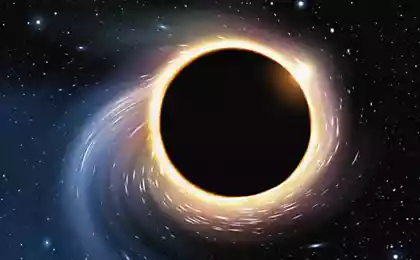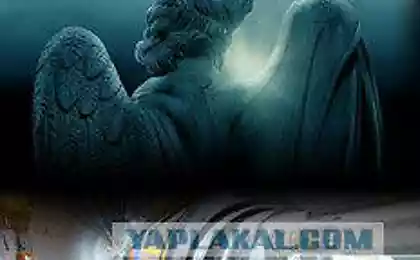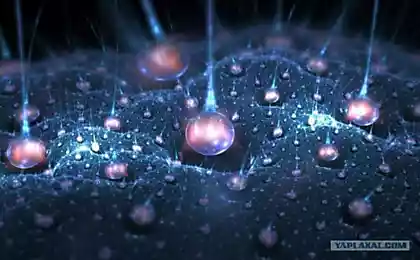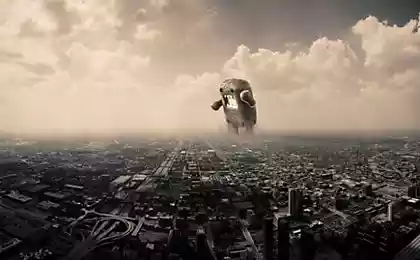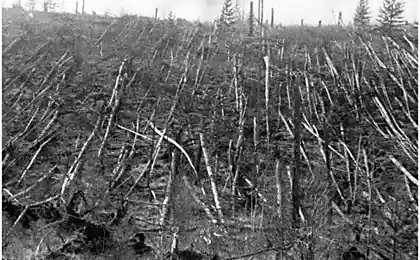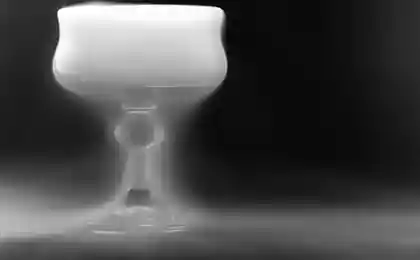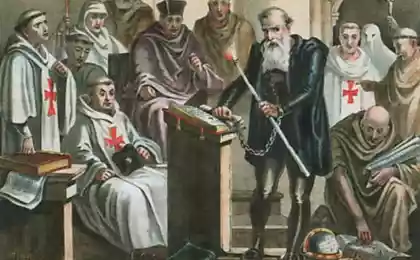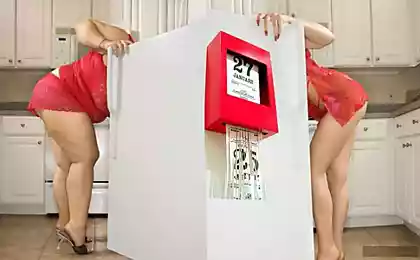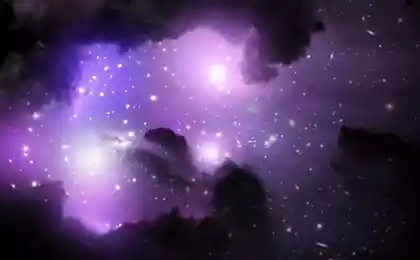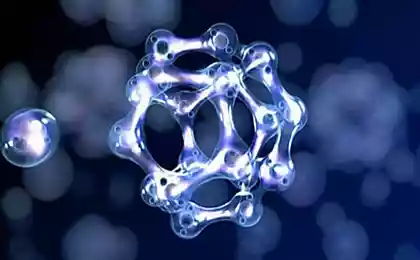467
Scientists have measured the force of interaction between particles of antimatter
"The big Bang beginning of the Universe produced matter and antimatter in equal amounts. But our current world is not similar. Antimatter is extremely rare. This is a huge mystery, says Aykhon Tang, a physicist from Brookhaven involved in the analysis of the data collected by the STAR detector of the relativistic ion Collider (RHIC). And although this mystery has been known for decades, she still remains one of the biggest problems of science, there is little guesswork on this subject. All that we learn about the nature of antimatter, could theoretically contribute to the resolution of this problem".
Peering into the shards of particle collisions, which recreate conditions of the very early Universe, scientists have measured the force of interaction between pairs of protons. Like the force that keeps ordinary protons together in the nuclei of atoms, the force between the protons is attractive and powerful.
The experiments were carried out at the RHIC accelerator, with the assistance of Brookhaven national laboratory U.S. Department of energy, in the studies of nuclear physics. The findings, published in the journal Nature, may shed light on the larger pieces of antimatter, including a core of antimatter, previously discovered at RHIC, and to help scientists answer one of the biggest questions in science: why in the world is almost no antimatter.
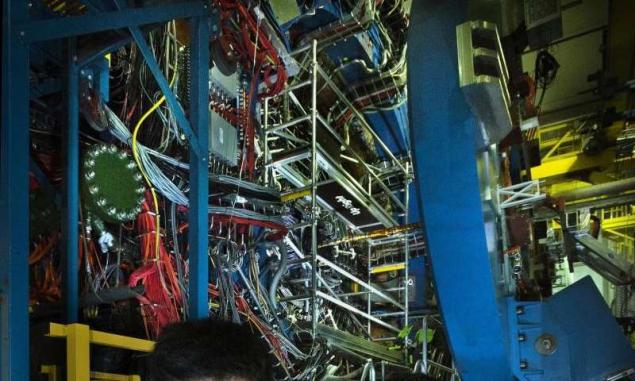
RHIC is the ideal place for the study of antimatter, as it is one of the few places on Earth where you can create this uncommon in sufficient quantity. This is done by the collision of the nuclei of heavy atoms like gold among themselves at almost the speed of light. These collisions produce conditions very similar to those that prevailed in the Universe microseconds after the Big Bang — at a temperature 250,000 times higher than in the center of the Sun, when everything was contained in the size of a single atomic nucleus. This energy Packed in a tiny space, creates a plasma of the fundamental building blocks of matter, quarks and gluons, and thousands of new particles of matter and antimatter in equal amounts.
"We took the opportunity to produce enough quantity of antimatter to conduct this study," says tan.The STAR has previously identified and studied a rare form of antimatter — including anti-alpha particles, the largest nucleus of antimatter ever created in the laboratory, each consisting of two antiprotons and two antineutrons. These experiments have given some understanding of how protons interact in such large composite objects. But in the case of "force between protons is a set of interactions with all other particles," says tan. "We wanted to examine the simple interaction of unbound protons, to get a clean view of that power".
To do this, they searched for data in gold-gold collisions at STAR pairs of protons that were close enough to interact when he emerged from the primordial fireball of the collision.
"We see a lot of protons, the basic building blocks of ordinary atoms comes out, and see almost the same number of protons, says Janequeo Zhang, PhD student group of Professor Yu-gang MA from the Institute of applied physics of Shanghai at the Chinese Academy of Sciences, working under the guidance of Tana in Brookhaven. Antiprotons looks like the familiar protons, but since they are antimatter, their charge is not positive but negative, so they curve the opposite way in a magnetic field detector"."Looking at the ones that hit each other in the detector, we can measure the correlation in certain properties, which give us an idea about the interaction between a pair of protons, including its power and range in which it manifests itself," he adds.Scientists discovered that the force acting between pairs of protons, attracts, like the strong nuclear interaction which holds ordinary atoms together. Given the fact that they have found bound States of antiprotons and antineutrons — cores antimatter is surprising. When the protons are close to each other, the strong force overcomes the tendency is equally (negatively) charged particles repel each other like allows the positively charged protons to bind the nucleus in the normal atom.
Actually, these measurements do not show the difference between matter and antimatter in relation to the behavior of the strong interaction. That is, within the accuracy of these measurements, matter and antimatter seem to be completely symmetrical. This means that at least with an accuracy which has been achieved by the scientist, it can be argued that asymmetric whims of the strong interaction cannot be explained by the predominant amount of matter in the Universe and the lack of antimatter.
But scientists say that we would not have known this if I hadn't conducted experiments.
"There are many ways to test the asymmetry of matter/antimatter, and there are more accurate tests, but in addition to accuracy, it is important to test it qualitatively different ways. This experiment represented a new test," says Richard lednický, STAR scientist from the joint Institute for nuclear research in Dubna at the Czech Academy of Sciences."The successful implementation of the methodology used in this analysis opens up exciting opportunities for studying the details of the strong interaction between other types of abundantly produced particles," he says, noting that the RHIC and the LHC well suited for such measurements, which are difficult to spend in other ways. published by P. S. And remember, only by changing their consumption — together we change the world! © Join us at Facebook , Vkontakte, Odnoklassniki
Source: hi-news.ru
Peering into the shards of particle collisions, which recreate conditions of the very early Universe, scientists have measured the force of interaction between pairs of protons. Like the force that keeps ordinary protons together in the nuclei of atoms, the force between the protons is attractive and powerful.
The experiments were carried out at the RHIC accelerator, with the assistance of Brookhaven national laboratory U.S. Department of energy, in the studies of nuclear physics. The findings, published in the journal Nature, may shed light on the larger pieces of antimatter, including a core of antimatter, previously discovered at RHIC, and to help scientists answer one of the biggest questions in science: why in the world is almost no antimatter.

RHIC is the ideal place for the study of antimatter, as it is one of the few places on Earth where you can create this uncommon in sufficient quantity. This is done by the collision of the nuclei of heavy atoms like gold among themselves at almost the speed of light. These collisions produce conditions very similar to those that prevailed in the Universe microseconds after the Big Bang — at a temperature 250,000 times higher than in the center of the Sun, when everything was contained in the size of a single atomic nucleus. This energy Packed in a tiny space, creates a plasma of the fundamental building blocks of matter, quarks and gluons, and thousands of new particles of matter and antimatter in equal amounts.
"We took the opportunity to produce enough quantity of antimatter to conduct this study," says tan.The STAR has previously identified and studied a rare form of antimatter — including anti-alpha particles, the largest nucleus of antimatter ever created in the laboratory, each consisting of two antiprotons and two antineutrons. These experiments have given some understanding of how protons interact in such large composite objects. But in the case of "force between protons is a set of interactions with all other particles," says tan. "We wanted to examine the simple interaction of unbound protons, to get a clean view of that power".
To do this, they searched for data in gold-gold collisions at STAR pairs of protons that were close enough to interact when he emerged from the primordial fireball of the collision.
"We see a lot of protons, the basic building blocks of ordinary atoms comes out, and see almost the same number of protons, says Janequeo Zhang, PhD student group of Professor Yu-gang MA from the Institute of applied physics of Shanghai at the Chinese Academy of Sciences, working under the guidance of Tana in Brookhaven. Antiprotons looks like the familiar protons, but since they are antimatter, their charge is not positive but negative, so they curve the opposite way in a magnetic field detector"."Looking at the ones that hit each other in the detector, we can measure the correlation in certain properties, which give us an idea about the interaction between a pair of protons, including its power and range in which it manifests itself," he adds.Scientists discovered that the force acting between pairs of protons, attracts, like the strong nuclear interaction which holds ordinary atoms together. Given the fact that they have found bound States of antiprotons and antineutrons — cores antimatter is surprising. When the protons are close to each other, the strong force overcomes the tendency is equally (negatively) charged particles repel each other like allows the positively charged protons to bind the nucleus in the normal atom.
Actually, these measurements do not show the difference between matter and antimatter in relation to the behavior of the strong interaction. That is, within the accuracy of these measurements, matter and antimatter seem to be completely symmetrical. This means that at least with an accuracy which has been achieved by the scientist, it can be argued that asymmetric whims of the strong interaction cannot be explained by the predominant amount of matter in the Universe and the lack of antimatter.
But scientists say that we would not have known this if I hadn't conducted experiments.
"There are many ways to test the asymmetry of matter/antimatter, and there are more accurate tests, but in addition to accuracy, it is important to test it qualitatively different ways. This experiment represented a new test," says Richard lednický, STAR scientist from the joint Institute for nuclear research in Dubna at the Czech Academy of Sciences."The successful implementation of the methodology used in this analysis opens up exciting opportunities for studying the details of the strong interaction between other types of abundantly produced particles," he says, noting that the RHIC and the LHC well suited for such measurements, which are difficult to spend in other ways. published by P. S. And remember, only by changing their consumption — together we change the world! © Join us at Facebook , Vkontakte, Odnoklassniki
Source: hi-news.ru

